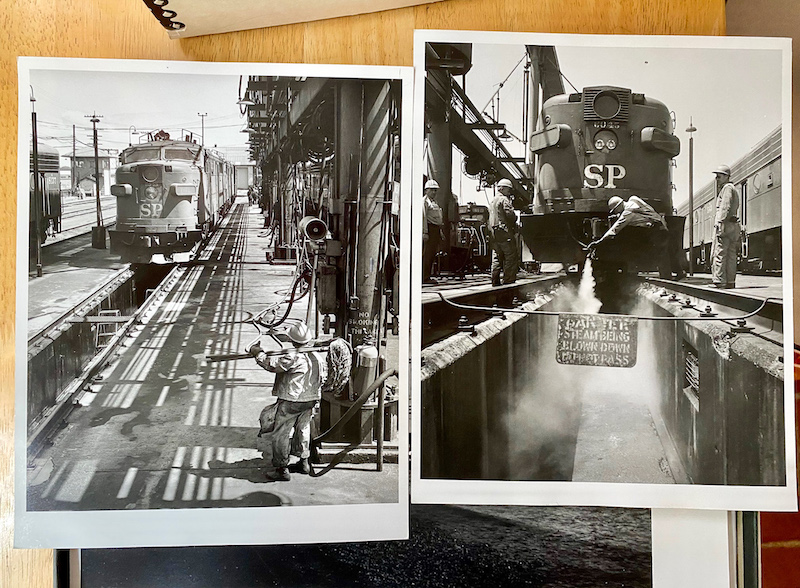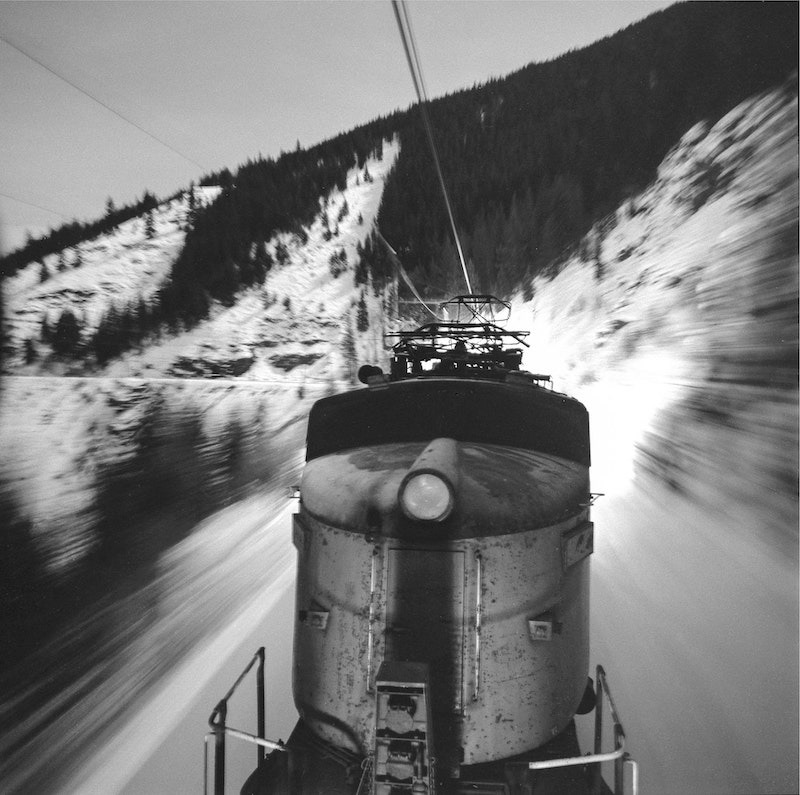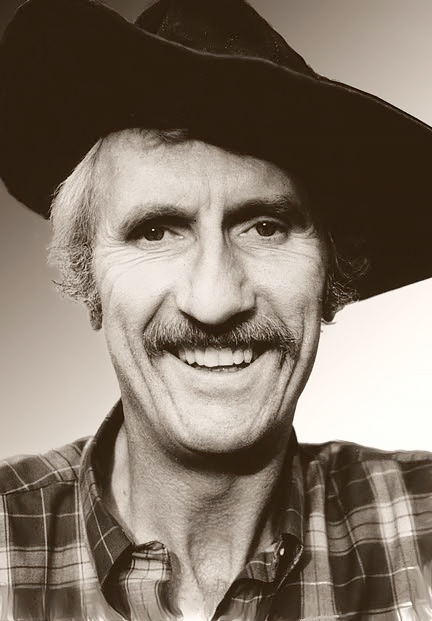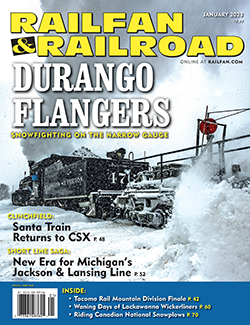This past summer, most of the color slide and black & white negative collection of Richard Steinheimer – arguably the greatest western railroad photographer of the 20th century – was acquired by the rapidly growing Center for Railroad Photography & Art archive in Madison, Wis. The announcement on June 13, 2022, was greeted by an overwhelming reaction of joy and relief across the railfan community, knowing that this extensive collection of expressive images had a safe, new permanent home.
A week before the announcement, the membership-supported Center sent a team led by archivist Adrienne Evans to Sacramento, Calif., where the group completed five days of sorting and packaging the collection, working closely with Shirley Burman Steinheimer, “Stein’s” widow, partner, and caretaker of his tremendous legacy. Thousands of his majestic b&w prints and about 30,000 color slides traveled to the Center’s archive in Madison, Wis., accompanied by b&w negatives circa 1975 and later, digital scans spanning his career, exhibition prints, and supporting materials. (The color collection of another legendary western photographer, the late Stan Kistler, also traveled to Wisconsin with the Steinheimer Collection). Additional Stein prints, negatives, and slides will come to the Center in future months.
Based in California and standing tall at six-foot-six, Stein blazed a trail of creative photography for more than six decades, pioneering styles and perspectives that today are commonplace. In a time when railroad action photographs were defined entirely by the three-quarter angle view — fondly known as the “wedge” where the locomotive and its train dominate the scene — Steinheimer’s dynamic photojournalism was alive with constantly changing angles, spectacular scenery, poignant human interest, lineside character, detail views, and moody atmosphere captured in all kinds of weather. His first articles appeared in Railroad Magazine during the early 1950s; with a joyful writing style and pictures that leaped off the pulpy pages, they shook up the rail enthusiast world.
Acclaimed books would follow and Steinheimer would become a regular byline in Trains, Railfan & Railroad, and other publications, while working professionally for railroad and technology clients. Over the decades, Stein’s name ascended into the stratosphere of rail photography and he was considered a “living legend” by legions of railfans — a title he good-naturedly shook off with his trademark humility and humor.

A Santa Fe freight train wraps around California’s Tehachapi Loop in the 1970s. Richard Steinheimer visited this famous location countless times over, as well as other mountain crossings.
In 1983, he met fellow photographer Shirley Burman and the two were married the next year; their love story would also be a formidable partnership, and it wasn’t long before business cards were printed reading Burman-Steinheimer Enterprises. Their clients included Southern Pacific, Amtrak, the California State Railroad Museum, TTX Corp., and the railroad industry press. Burman was fascinated by the role of women in railroading and Stein was an enthusiastic supporter of her projects (her long-awaited book Sisters of the Iron Road is now available).
Sadly, Stein was diagnosed with Alzheimer’s Disease in 2001; after a long decline he passed away on May 4, 2011. While caring for Dick for more than a dozen years, Shirley scanned slides, negatives, and prints; tried to decipher his handwriting on negative sleeves, prints, and notebooks; and built a searchable database to try to make sense of it. All the while, she held out hope that her husband’s collection would someday find a home with people who were passionate about his work. Her dream was realized this past summer.
Since then, Evans and associate archivist Heather Sonntag have begun work digitizing and cataloging the Steinheimer Collection to eventually make it available to the public, historians, authors, and media. It’s a daunting and time-consuming task, but all involved are thrilled at the opportunity to work with Stein’s groundbreaking photography and share it with the world.
While the work is still in its earliest stages as of this writing in mid-November, the collection is already making an impact on the entire Center team. Working with Shirley to fill in information gaps, correct long-held misbeliefs, and capture personal anecdotes, Stein’s photography — largely dormant for the past decade — is re-emerging with new life and vibrancy. He is still teaching us, although he would likely chuckle at the thought. His body of images is mesmerizing and easily holds up in today’s era of dazzling contemporary photography. Below are some lessons and findings from the work uncovered so far:
Storytelling by Layering: Following his journalistic instincts, Stein was a champion of returning to the same place again and again to get the pictures needed to tell a complete story in his projects. A great example is his work in Oakland, Calif., documenting the Southern Pacific Alco PA locomotives based there. Stein’s thundering action photos of “honorary steam locomotives” may be his best known from this effort, but the entire story couldn’t be told without his views of SP shop workers maintaining the venerable PAs, or the passengers and crew members who managed the PA-powered trains.
He was Fearless: “We took risks, but we got rewards,” Steinheimer told fellow photojournalist and author Ted Benson during a series of 1990s interviews, as he recalled a pivotal 1950s winter trip to Utah with friend Don Sims. “I realized I didn’t have to be fearful or hold back anymore.” That relentless focus and thirst for adventure would continue on legendary trips to document The Milwaukee Road’s electrified main line in the Pacific Northwest, SP snow-fighting trains on Donner Pass, and Santa Fe’s Needles District in the Mojave Desert. Whether photographing a “Little Joe” from the porch of a trailing SD40-2 under a full moon, or dodging lightning bolts near searchlight signals in a monsoon, Stein did whatever he needed to get the shot.
A Master Printer: Yes, his prints are as magnificent as you imagine. No matter how beautiful Steinheimer’s images appear in a magazine or book, nothing compares to viewing his exquisite prints in person. They are tonally perfect, bold, crisp in detail, and the images simply leap from the paper. Stein was a masterful printer and a stickler for detail. Some print boxes contain multiple “draft” prints that reflect the meticulous fine-tuning he used to reach perfection. The Center’s team could not have better source material to digitize.
The World of Color: His color work is as fantastic as his b&w. Rail photography fans recoiled in horror during the early 1980s when Stein decided that he was shifting entirely to color slide film. And yet he’d been shooting transparency film since the late 1960s; his color work can be found in Trains photo essays such as “Mojave Crossing,” “Cajon Pass Revisited,” “Tehachapi,” and “The Hill.” One of the most exciting discoveries is his 1968 “Centennial” project, intended to examine the influence of the first transcontinental railroad on the occasion of its 100th anniversary in 1969. Shot entirely in color, Stein originally regarded it as a failure. In hindsight, it’s really a masterpiece collection that captures trains, railroaders, and the towns and people they served in everyday settings.

Stein’s love for “layering” — revisiting a subject several times — as well as his darkroom mastery are displayed in these prints of Southern Pacific Alco PAs in Oakland, Calif.
Black & White Negatives: A commonly asked question centers around Steinheimer’s sale of about 12,000 of his b&w negatives to Everett DeGolyer, Jr., a lifelong railfan who was building a private archive of historic railroad photography. Steinheimer retained copyright and had access to any image for publication. Following DeGolyer’s death, the negatives were moved to the DeGolyer Library at Southern Methodist University in Dallas where they reside today. Shirley has previously assisted the library with scanning and cataloging many of the negatives, and the Center hopes to work with the library in the future. It’s important to stress that the Center has thousands of prints of these images, fully realized as the master intended. Additionally, several binders of negatives were uncovered in Sacramento and contain a large variety of previously seen and unseen images.
Everyone Needs a Shirley: Today’s photographers would be wise to involve their spouse or a close friend to be a caretaker of their collection. Shirley Burman Steinheimer’s tireless work cataloging Dick’s archives both at home and from the DeGolyer Library has been invaluable to the Center’s team as they embark on this Herculean effort.
A Friend to All: Stein’s talent was equaled only by his friendliness to railroaders and fellow photographers. “As with all my encounters with Stein, it impressed me how he seemed a lot more interested in sparking one’s own creativity, rather than in copying his well-honed talents,” wrote Paul Enenbach, who “marked up” for one of Stein’s photography workshops in 2000, spending time in the famous garage darkroom and up on “the Hill” (aka Donner Pass). “Stein was generous with sharing his own talent, but encouraged others to find their own angles.”
Unseen Stein: There are thousands of previously unseen images. What’s been published over the decades is only the tip of a large, exciting iceberg that waits to be revealed to the world.
Aging Well: Photographs are like wine — they get better with age. Steinheimer repeatedly told this to his close friend Curt Fukuda, a fellow photographer who shared a Bay Area studio with Stein. “What may seem mundane at first may become profound when viewed years after,” Fukuda said. “The photographs of Dick Steinheimer have an advantage — they are powerful and important now. Their importance and timeless beauty will only become greater as time passes.”
We’re honored that Shirley chose the Center for Railroad Photography & Art to be the permanent home for Richard Steinheimer’s priceless works of art, and all of us at the Center are grateful to our members and supporters who have made this possible. Keep up with the Center’s latest news and learn more about our work at railphoto-art.org.
Help Preserve the Legacy of Richard Steinheimer: CRP&A is working on surveying, rehousing, digitizing, and sharing this iconic collection. Learn how you can help here.
Elrond Lawrence is the Center for Railroad Photography & Art’s acquisitions and marketing coordinator and a contributing editor to Railfan & Railroad.





